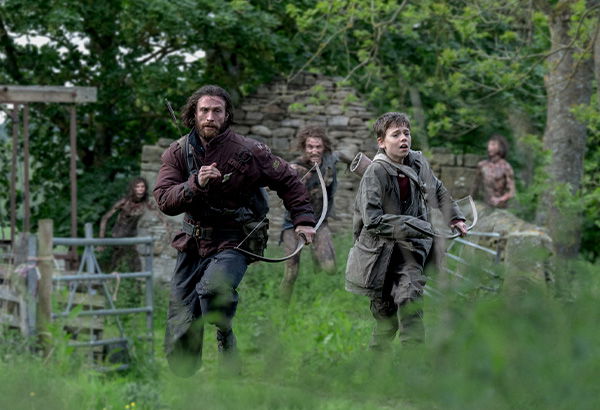
Two decades after redefining modern zombie horror, Danny Boyle is back to finish what he started. 28 Years Later, releasing in cinemas on 20 June 2025, promises to be the most intense, emotional, and visually striking chapter of the iconic 28 Days Later saga.
Set in a world still fractured by the Rage Virus, this gripping horror thriller drops us into a bleak new era—one where survival isn't just a question of strength, but morality. If you thought the horror was over, think again. The nightmare has been waiting… and it’s ready to spread.
The story picks up on the eerie, isolated tidal island of Lindisfarne in Northumberland. Here, Isla, played with heart-wrenching intensity by Jodie Comer, tries to build a quiet life with her husband Jamie (played by Aaron Taylor-Johnson) and their 12-year-old son Spike (Alfie Williams). Jamie, a former fireman turned scavenger, does what he must to keep his family safe—especially with Isla pregnant and hope hanging by a thread.
But peace is fragile, and when old threats resurface, survival takes on new meaning. A mysterious survivor named Dr. Kelson (Ralph Fiennes) reappears with knowledge of the virus—its past, and possibly its terrifying future. Meanwhile, danger rises in the form of Sir Lord Jimmy Crystal (Jack O’Connell), a manipulative cult leader whose version of salvation may be worse than infection.
Add to the mix a disillusioned NATO soldier (Edvin Ryding), a rogue enforcer named Jimmy Ink (Erin Kellyman), and a community teetering on collapse, and you’ve got a volatile, gripping tale of fear, power, and the fragile hope of rebuilding what was lost.
This is not a film to watch on your phone under a blanket. 28 Years Later demands a full sensory experience, and Ster-Kinekor is the only place to feel the full force of it.
From haunting landscapes drenched in dread to terrifyingly real action sequences, the film’s cinematography is bleakly beautiful. You’ll hear the infected before you see them. And once you do, it’s already too late. Danny Boyle’s mastery of mood, pacing, and silence makes every moment in the theatre unbearably tense—and unforgettable.
This isn’t just horror. It’s survival cinema at its most immersive. And yes, you’ll probably hold your breath more than once.